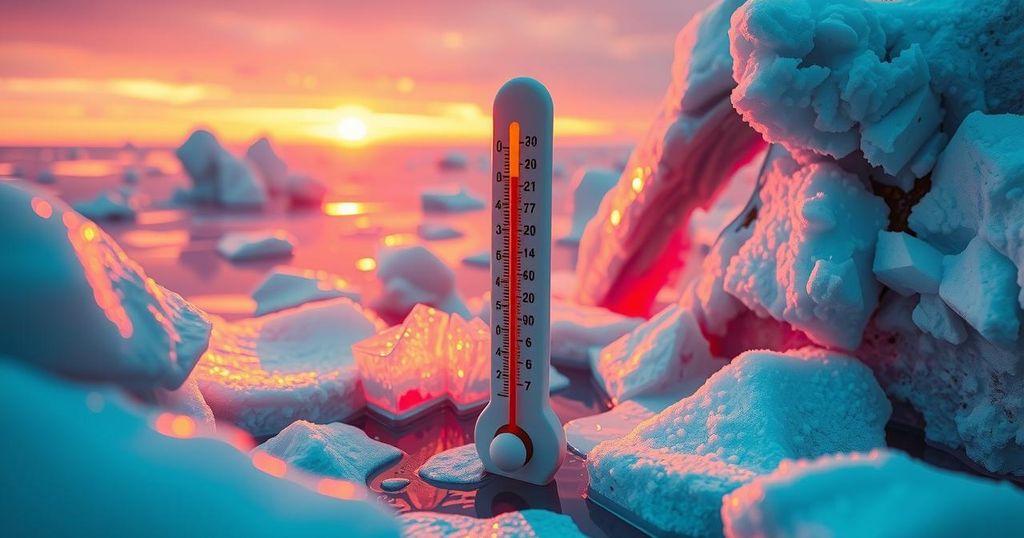January 2025 has reportedly emerged as the warmest on record, with an average temperature anomaly of 1.75°C above pre-industrial averages. This record was achieved despite ongoing La Nina conditions, which generally lead to cooler temperatures. Historical patterns indicate a deviation from expected climate trends, prompting concerns regarding future temperature rises and climate change effects.
January 2025 has emerged as the warmest January on record, exhibiting an average temperature anomaly of 1.75°C above the pre-industrial average from 1850 to 1900, as reported by climate scientists analyzing the ERA5 dataset. This significant anomaly is corroborated by global temperature increases observed in both hemispheres, leading to record-breaking heat in regions such as Jamaica and Madagascar toward the end of January.
The ERA5 dataset, developed by the European Centre for Medium Range Weather Forecasting, also underpins the Copernicus Climate Change Service. Notably, the unprecedented warmth occurred against the backdrop of an ongoing La Nina phenomenon in the equatorial Pacific, which typically yields cooler global temperatures. This situation marks a distinct departure from previous January records, which coincided with either El Nino conditions or neutral sea surface temperature phases.
Zeke Hausfather, a climate scientist with Berkeley Earth, noted on social media that the warmth of January 2025 was surprising given the prevailing La Nina conditions. He also pointed out that this anomaly, which surpassed the previous record set in 2024, is significant as it breaches historical expectations related to temperature patterns influenced by ENSO phases.
Historically, earlier record months in January (in 2024, 2020, and 2016) correlated with El Nino phenomena, which typically heighten global temperatures. The latest El Nino event, declared over by the World Meteorological Organization in mid-2024, contributed to 2024 being the warmest year recorded, with an annual average temperature anomaly of 1.55°C.
La Nina conditions were noted to have begun in December 2024, likely persisting into early 2025. However, projections indicate that this could be a brief episode compared to the prolonged La Nina from 2020 to 2023, which still saw record heat. The WMO had cautioned that greenhouse gas emissions could indeed overshadow the cooling effects traditionally expected from La Nina.
Despite forecasts for a cooler 2025 due to the La Nina, the extraordinary warmth in January suggests a potential deviation from these predictions. Hausfather reflected that the preceding years of 2023 and 2024 had been exceptionally warm and indicated a complex interaction between climate drivers affecting the current temperatures. Furthermore, he emphasized that the recent temperature highs may result in anomalously warm conditions this year compared to earlier expectations.
Overall, January 2025’s unexpected temperatures challenge the norms observed during La Nina events and may indicate a trend of elevated global temperatures despite cyclical climatic variations. This development warrants further examination to understand the underlying drivers and mitigate future warming risks.
The article discusses the record warmth experienced in January 2025, which has set a new high in global average temperatures despite the presence of La Nina conditions in the Pacific. Typically, La Nina leads to cooler temperatures; however, the anomaly reported highlights the influence of other factors, including human-induced greenhouse gas emissions. Historical context and patterns from past warm Januarys provide a framework for understanding the significance of these trends in relation to climate change.
In summary, January 2025 recorded the highest temperatures for the month, with a significant anomaly of 1.75°C above pre-industrial averages, challenging previous expectations set by La Nina conditions. The interaction of various climate drivers, including greenhouse gas emissions, contributes to this unexpected warmth. This year could witness ongoing elevated global temperatures, prompting further investigation into climate change dynamics and their implications.
Original Source: www.downtoearth.org.in




